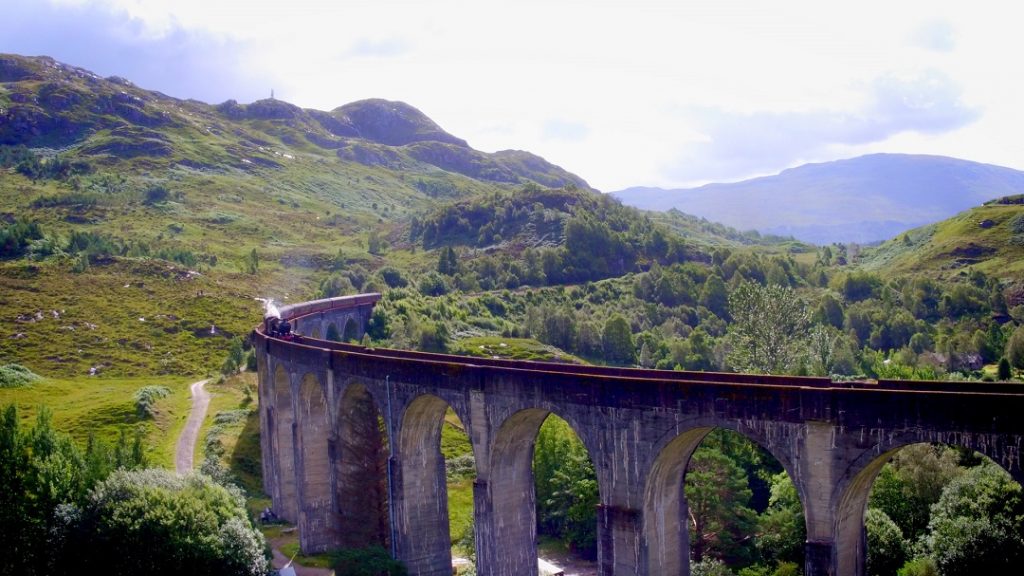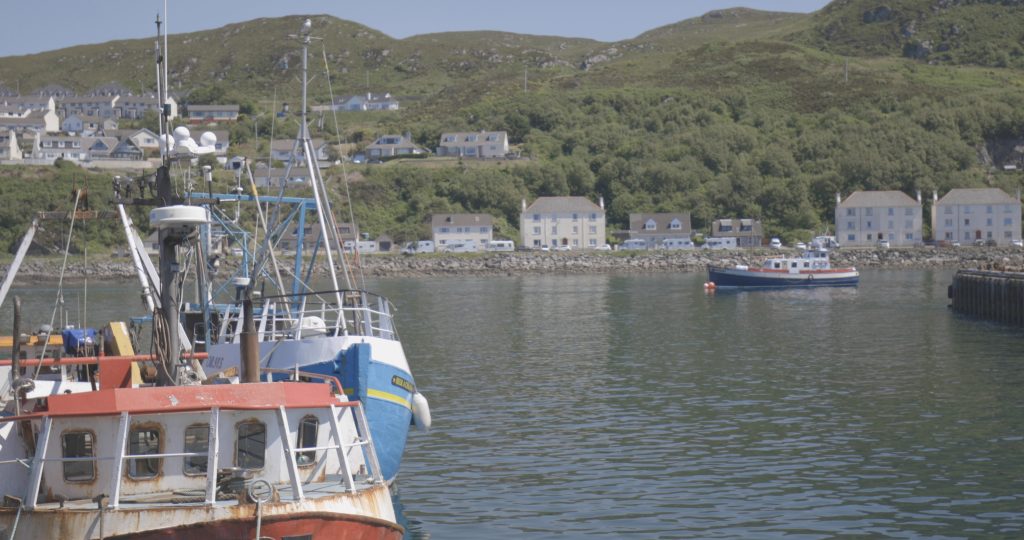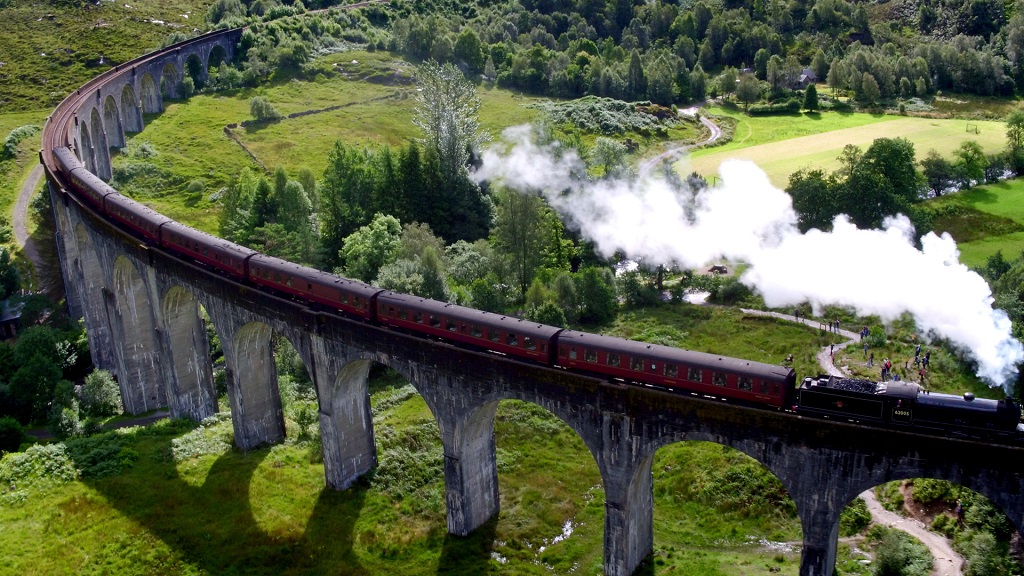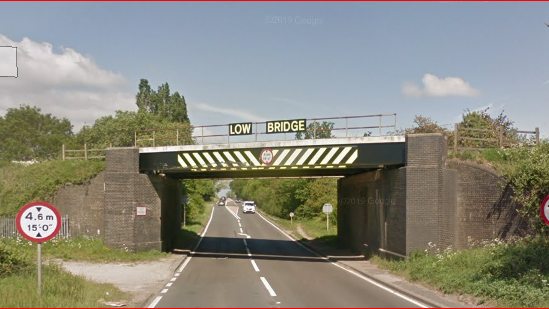September 1 is Back to Hogwarts day and we’re celebrating the magic of a Scottish railway icon.
“Harry peered out of the window… He could see mountains and forests under a deep purple sky…” JK Rowling
The Glenfinnan Viaduct – one of the world’s most famous pieces of railway infrastructure and the longest mass concrete rail bridge in Scotland – captured the imaginations of a new generation when it appeared in the Harry Potter films.
Watch this film to see the famous Jacobite Steam Train crossing the viaduct:
Each summer, it attracts thousands of visitors a week eager to catch a glimpse of the Jacobite Steam Train, which runs from Fort William to Mallaig on the West Highland Line – one of the most scenic railway journeys in Britain.
Hege Hernæs, curator of the Glenfinnan Station Museum, at which the Jocobite stops, said: “The steam train crossing the viaduct is an iconic image. It now signifies Scotland.”
An engineering masterpiece
The viaduct’s engineering and societal importance date to 1901, when its opening made it one of the last major constructions of the Victorian railway revolution.
Robert McAlpine & Sons, headed by Robert McAlpine – known as Concrete Bob – built the 21-span bridge using mass concrete, making it Scotland’s longest concrete viaduct.
The choice of material also saved significant time and money – the bridge took about four years to build but by October 1898 was complete enough to carry goods, according to Chartered Civil Engineer magazine. It cost just £18,904 – about £2.3m in today’s money.
Today, the concrete’s weathering from the strong wind and rain of the Highlands gives it distinct character – something Network Rail ensures remains; the bridge is Grade A listed, meaning it is nationally important and we must refrain from cleaning off the marks from the rain that drains through it.
Glenfinnan Viaduct in numbers:
- 416 yards Long
- 21 semi-circular spans
- Largest is span one at 50 feet
- Spans vary from 50’ 0” to 46’ 6”
- Approximately 100 feet high
- Total cost £18,904 (about £2.3m today)

Economic boost – the transformation of Mallaig

The Glenfinnan Viaduct carries the Mallaig extension, which takes the West Highland Line from the village of Banavie near Fort William to the fishing port of Mallaig.
The railway’s arrival in this remote part of Scotland led to the rapid growth of Mallaig, allowing local fishermen to transport fresh catches from the then small village to Glasgow, and leading to a surge in the number of businesses operating in the area.
Mallaig’s fishing heritage remains but tourism is the town’s biggest industry today, bolstered by the West Highland Line and the ever-popular Jacobite.
Keith McLellan, asset engineer, structures at Network Rail, said: “There’s more passengers in recent years with the introduction of the Jacobite train coming up and having the tourists come through.”
Visitors on their way to Mallaig can alight at railway stations along the line, including Glenfinnan, where they can check in their luggage and discover the local area.
Hege said: “It’s easy to come by train, dump your luggage, go and explore and enjoy Glenfinnan because it has so much to offer.”
Take care and keep off the railway
The Glenfinnan viaduct – especially during the Jacobite season – is an exceptional photo opportunity but we urge visitors to take care and stay off the railway.
Trespassing on the railway is a criminal offence and dangerous. It risks your life as well as the lives of others, endangering passengers and railway workers. Remain in a safe position to enjoy your view and do not use drones – it is illegal to fly a drone on or near the railway.
Read more:
An enthusiast’s guide: how to enjoy the railway safely
Guidelines for taking photos at stations
Did you know?
For decades, a myth said a horse and cart fell inside a pier of the Glenfinnan Viaduct during construction, in about 1899.
In 2001, radar imaging proved there was a grain of truth in the story but that it in fact happened at another McAlpine concrete rail bridge – the nearby Loch nan Uamh Viaduct.
Read more:
Film: discover the Network Rail archive
People and the railway: reconnecting Scotland
Folkestone Warren: The Great Fall to SSSI
From the archive: our oldest items
Read the George Stephenson notebook online
Step back in time… and inside Britain’s busiest signal box
Network Rail graduates step into history
Preserving railway history: five things saved by Network Rail




